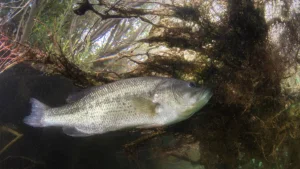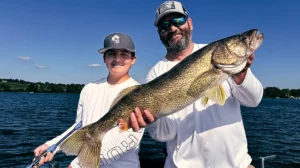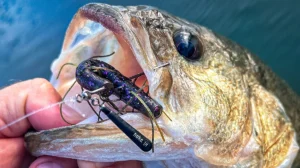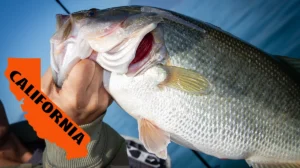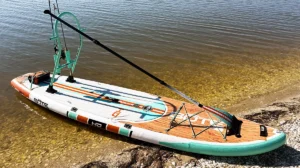There’s likely a little mud in my blood. I was born and raised on it, taught to fish from the very beginning in water you wouldn’t dare drink if you were thirsting to death (not for a while, at least). And if it got to that point, I’d likely sift it through a sock first to try and clean it up a bit. I’m talking about some dirty water but I sure love it. Muddy water is a turnoff for lots of anglers but it’s a great place to catch fish and an even better place to get away from a lot of the other boats on the water.
Bladed baits like spinnerbaits and vibrating jigs work extremely well in muddy water because their blades appeal to the two senses bass rely on most in low-visibility situations—sight and feel—by putting off a lot of vibration and creating a bright flash. But not all bladed baits are created equal and not all muddy water has the same level of visibility or temperature. So today, we’re going to break down the factors that go into picking the right spinnerbait or vibrating jig for the job.
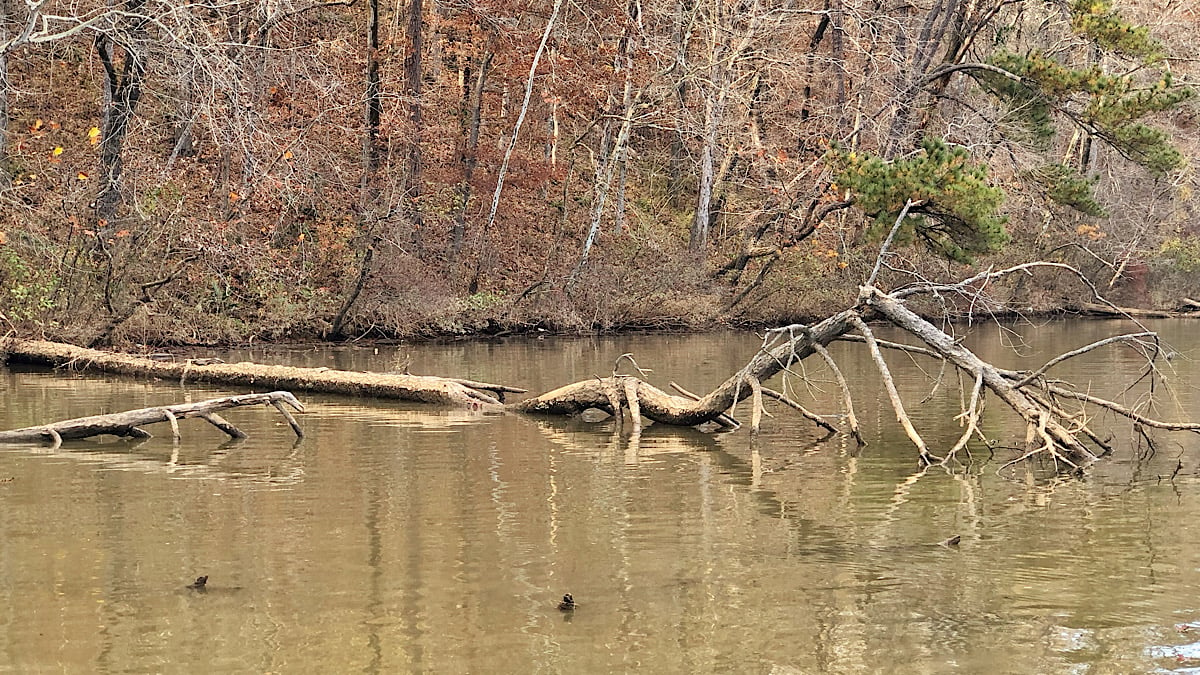
Cover
When deciding whether to fish a spinnerbait or a vibrating jig in muddy water, I first assess the type of cover I’ll be fishing around. You’ll often find that several baits would theoretically be effective at drawing a strike but some are much better at coming through certain cover than others. For instance, I really like a vibrating jig in submerged vegetation because the bait rips free better than a spinnerbait typically will. But the bass would likely bite one just as good as the other. The spinnerbait though is less effective simply because it can’t be fished efficiently.
On the flip side of that, I’ve caught some nice fish out of laydowns on a ChatterBait but rarely fish one in that type of cover anymore because they’re much more prone to hanging up in that situation versus a spinnerbait. The hook on a spinnerbait stays vertical nearly all the time, as long as the spinnerbait hasn’t been damaged. But the hook on a vibrating jig is constantly rolling left to right as the bait rocks back and forth. This makes it much easier to worm a spinnerbait through a tree full of limbs than a vibrating jig, though the fish would likely bite either.
Then there’s one more cover situation in which a vibrating jig shines much brighter than a spinnerbait and that’s whenever you’re wanting to skip a bait under cover. Docks, bushes and other overhead cover make some great dwelling spots for a bass but skipping a spinnerbait is dang near impossible. A vibrating jig, however, is one of the easiest baits out there to skip. So this is another example of a time when both baits would likely get bit but one is much more effective at getting in front of the fish.

Choosing the right spinnerbait
There are two basic blades combinations for muddy water in my personal opinion—double Colorado and Colorado/big willow leaf. Though I’m sure there are a couple dozen other combinations that could get bit in low-visibility situations, keeping it simple with these two choices gives me plenty of opportunities to get bit and keeps me from running myself crazy guessing between 20 different baits.
A simple 3/8-ounce double Colorado spinnerbait with something near a No. 5 for the bigger blade and a No. 3 for the smaller one works extremely well in really muddy situations, especially when the water is cold. I’ll typically pair this combo with a white skirt and white trailer so the entire bait is reflecting as much light as possible. Then, because of the big Colorado blades, I can slow roll this bait in an upright position right along side the cover where lethargic bass are hunkered down. In warmer water, you can go with a slightly smaller blade combo to speed the bait up a little or move up to a 1/2-ounce head for the same purposes.
The counterpart in my two spinnerbait tackle box is a big willow leaf/Colorado combo. A No. 6 willow leaf blade gives off a whole lot of vibration. The thump is sharper with a Colorado blade actually and a little duller and slower with a willow leaf this size. Pairing the big No. 6 willow blade with around a No. 1 Colorado, you have a bait that can be fished super slow with a lot of vibration but not as fast and hard of a thump. This is the combo that I particularly like when the water is in the off color to muddy range, but not chocolate milk. Pairing this spinnerbait with a chartreuse skirt and gold blades, I have an alternative that contrasts the double Colorado spinnerbait in a few different ways.
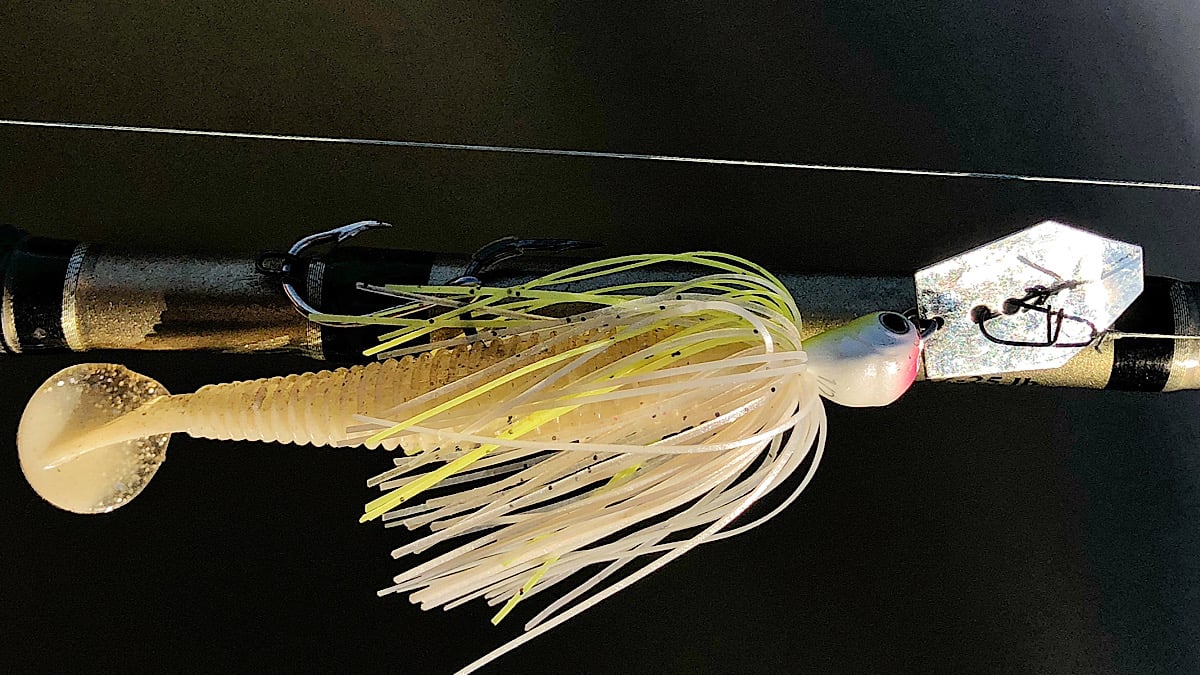
The challenges with each bait
You’ll find a few challenges which each of these baits in certain situations and that will help you narrow down your selection as well each time you’re faced with options. We already discussed how a vibrating jig is more prone to hanging up in wood, so you should choose a spinnerbait there. And a spinnerbait doesn’t skip very well, so you’ll want to go with a vibrating jig when fishing overhanging cover. In addition, the big No. 6 willow leaf blade can be difficult to throw, especially in strong wind, as the blade catches a lot of air and thus slows the bait down. So if it’s a particularly windy day, even though the willow leaf would get bit, you may want to go with a double Colorado to help with the accuracy of your casting.
I don’t like vibrating jigs for extremely cold water, either. You can only fish a vibrating jig so slow and the action is kind of crisp with it. It has a sharper vibration and less of a dull thump like the two big-bladed spinnerbaits. So I prefer those baits that I can reel slower in really muddy and really cold water. But the new Big Blade ChatterBait from Z-Man may fill this hole nicely in time. I haven’t had an opportunity to fish with it yet but this bait has an oversized blade on it and should be fishable super slow with a duller thump than a traditional vibrating jig.
I’ll also shy away from a double Colorado spinnerbait as the water starts to clear. It’s then that I like to swap over to the big willow leaf or a vibrating jig, and this may be more of a personal preference than anything else. But it is a practice that has served me well over the years. Ultimately, selecting the right bladed bait for muddy water is all about looking for the most efficient bait given the particular set of conditions. But one thing is for sure—you should never shy away from the mud. There are big fish living in it and spinnerbaits and vibrating jigs are great tools for extracting them. Hopefully these tips will help you better select the right bladed bait for the job the next time you hit the water.



